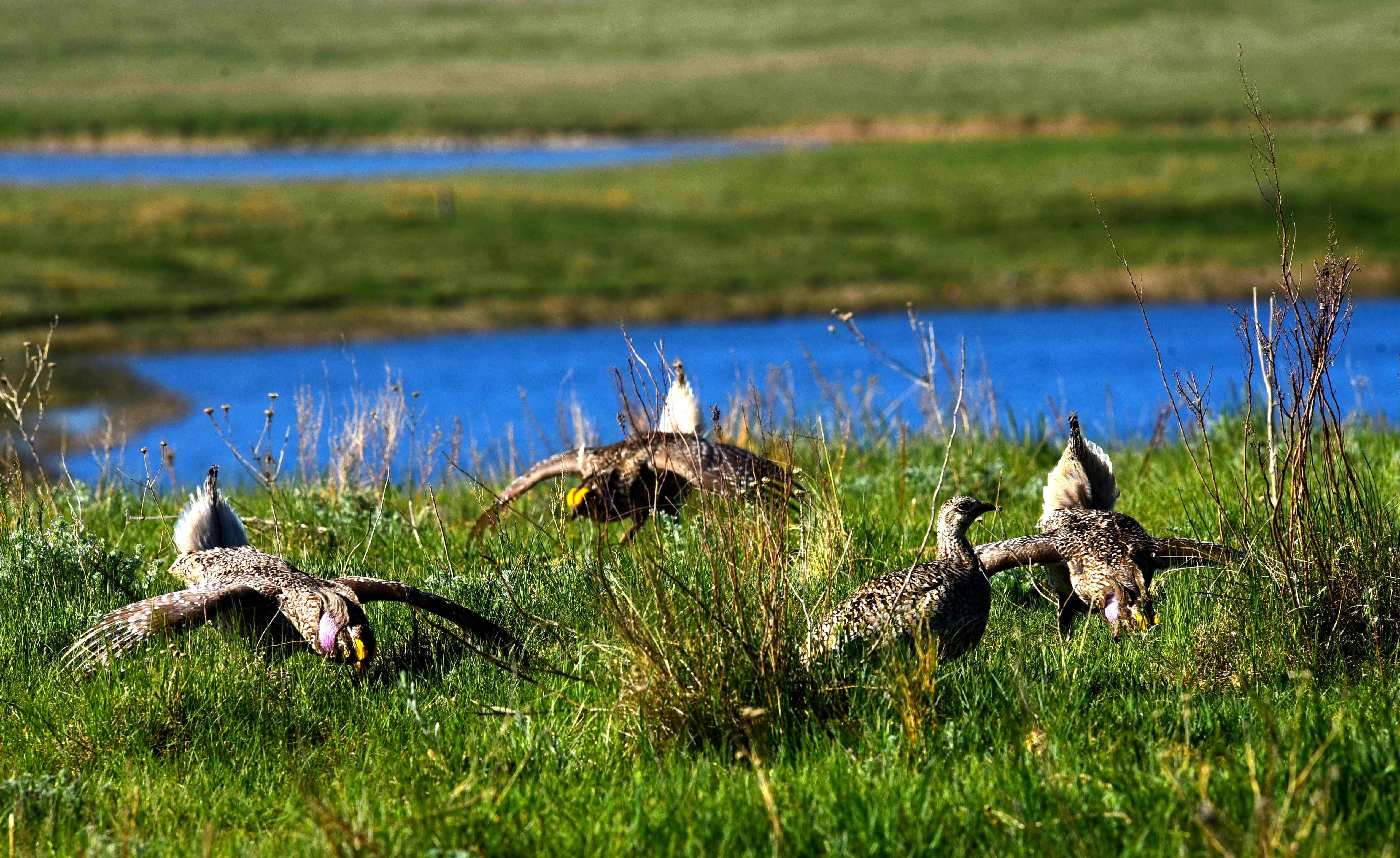
Photo: Rick Bohn
BISMARCK, N.D. (G&F) – North Dakota Game and Fish Department upland game biologists summarized the spring survey results for sharp-tailed grouse, ruffed grouse and greater sage grouse.
Summaries from the spring sharp-tailed grouse census indicate a 13% decrease in the number of male grouse counted compared to last year.
Statewide, 2,639 sharptails were observed on spring dancing grounds this year compared to 3,281 in 2021. Male grouse recorded per square mile (4) was slightly above the 10-year average (3.8).
“These declines align with poor reproduction documented during the 2021 drought,” said Jesse Kolar, upland game management supervisor. “We observed low sharptail reproduction rates during late summer roadside counts and found a low juvenile-to-adult ratio from hunter-submitted wings.”
Survey results indicate a 52% increase in the number of ruffed grouse drums heard in the Turtle Mountains, but a 5% decrease in drums heard per stop in the Pembina Hills.
“When combined, survey results indicate a steady population of ruffed grouse drums heard in 2022 compared to 2021,” Kolar said.
A total of 14 male sage grouse were counted on one active lek this spring, down seven males from six leks. North Dakota does not offer a hunting season on sage grouse due to a low population.
The spring grouse census serves as relative indices of breeding populations and are largely representative of production and recruitment from the previous year. For sharptails, they can be used in combination with brood count data to predict fall populations. Game and Fish staff conduct late summer roadside counts from late-July through August to survey upland game broods and will release a summary in early September, Kolar said.
“Despite the decrease, the fall outlook will include the spring breeding adults plus successful broods,” he added. “This spring had poor residual grass following the 2021 drought. Early nesting was further disrupted by significant snowstorms in the second and third weeks of April. However, the result is a grassland landscape with abundant, tall nesting vegetation for mid- to late-season nesting attempts. We’ll see if that is enough to protect chicks from summer storms.”
